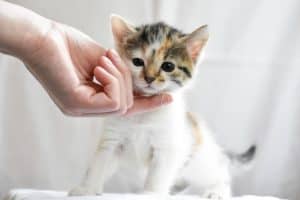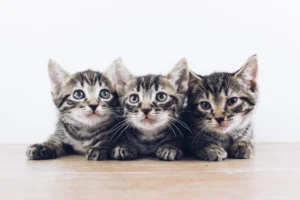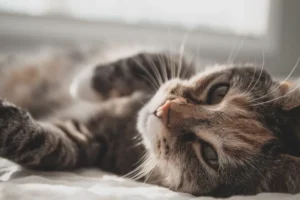Cats are known for their curious nature and unique behaviors, and one common sight is seeing them interact with plants. If you’ve ever wondered why your feline friend has a special affinity for your houseplants, you’re not alone. Let’s explore the reasons behind why your cat loves plants.
Cats have a natural instinct to explore and interact with their environment, and plants provide them with sensory stimulation and entertainment. The lush greenery, interesting textures, and intriguing scents of plants can attract cats and keep them engaged for hours on end.
The Appeal of Plants to Cats
Cats have an undeniable attraction to plants that can often leave pet owners scratching their heads. One key reason for this fascination lies in the variety of textures and scents that plants offer. The soft and delicate leaves of certain plants provide a stimulating tactile experience for cats, satisfying their need for sensory exploration. Moreover, the fragrant flowers of plants can captivate a cat’s sense of smell, making them irresistibly drawn to these green wonders in your home.
Another aspect that appeals to cats is the opportunity for play that plants present. Cats are natural hunters and explorers, and the movement of leaves or branches in the breeze can trigger their instinct to chase and pounce. This interactive element of plants can provide hours of entertainment for your feline friend, making them a favorite pastime for many curious cats.
Cat Behavior and Instincts
Understanding a cat’s behaviors and instincts is crucial when trying to comprehend their love for plants. Cats are territorial animals by nature, and they often mark their space by rubbing their scent glands on objects around them. This can include plants, as cats may see them as an extension of their territory. Additionally, the urge to chew on foliage is a common behavior in cats that can be traced back to their predatory instincts.
Cats are obligate carnivores, meaning their diet primarily consists of meat. However, they may chew on plants as a way to supplement their diet with roughage and fiber. This behavior is perfectly natural for cats and can even have health benefits, such as aiding in digestion and preventing hairballs. So, if you find your cat nibbling on your houseplants, don’t be alarmed – they may just be satisfying their instinctual need for greens in their diet.
Safe Plants for Cats
If your curious feline friend can’t resist the allure of your houseplants, it’s essential to make sure they are safe to interact with. Here are some non-toxic plants that you can confidently add to your home without worrying about your cat’s health:
- Spider Plant: Known for its air-purifying qualities, the spider plant is a favorite among cats and poses no harm if ingested.
- Bamboo Palm: This tropical plant adds a touch of greenery to your space and is safe for cats to be around.
- Boston Fern: With its lush and vibrant foliage, the Boston fern is a cat-friendly option that can thrive indoors.
- Areca Palm: Another palm variety that is safe for cats, the Areca palm brings a tropical vibe to your home without any toxicity concerns.
By incorporating these safe plants into your home, you can create a cat-friendly environment that both you and your furry companion can enjoy.
Redirecting Behavior
If your cat’s love for plants is causing havoc in your home, there are ways to redirect their attention towards more appropriate activities. Try these tips to discourage your cat from munching on your greenery:
- Interactive Toys: Engage your cat in playtime with interactive toys that stimulate their natural hunting instincts.
- Cat Grass: Provide alternative greens like cat grass for your cat to nibble on, satisfying their urge to graze.
- Scratching Posts: Encourage your cat to scratch on designated scratching posts to redirect their focus away from your plants.
- Catnip: Introduce catnip toys to entice your cat and provide them with a safe and enjoyable distraction.
Redirecting your cat’s behavior towards these alternative activities can help preserve your plants while keeping your cat happy and healthy.
Indoor Enrichment for Cats
Indoor cats need mental stimulation and physical activity to thrive. Providing enrichment activities helps satisfy their natural instincts and keeps them happy. Interactive toys, scratching posts, and puzzle feeders are great options to keep your feline friend engaged. Additionally, creating vertical spaces for climbing or installing window perches can offer new vantage points for your cat to explore. Regular play sessions and rotating toys can prevent boredom and provide much-needed exercise.
Cat-Friendly Plant Alternatives
If your cat has a penchant for plants, it’s essential to offer safe alternatives to satisfy their curiosity. Cat grass is a popular choice that provides essential nutrients while aiding in digestion. Catnip is another favorite among felines, eliciting a playful response when ingested. Spider plants and Boston ferns are non-toxic options that can withstand some nibbling. Remember to research any plant before introducing it to your home to ensure it’s safe for your furry companion.
Cat-Friendly Plant Alternatives:
- Cat Grass: Provides essential nutrients and aids in digestion.
- Catnip: Elicits a playful response when ingested.
- Spider Plants: Non-toxic and can withstand nibbling.
- Boston Ferns: Safe option for curious cats.
By offering these plant alternatives, you can satisfy your cat’s plant curiosity while keeping them safe and entertained.
Bonding with Your Cat
Have you ever wondered why your cat seems so fascinated by your houseplants? It turns out that this behavior is quite common among our feline friends. Cats are naturally drawn to plants because of their interactive nature – the textures, scents, and visual appeal captivate their senses. When your cat shows interest in your plants, it’s an excellent opportunity to bond with them.
Engaging with your cat’s love of plants can strengthen your bond and create quality time together. Try incorporating plant-related activities into your playtime routine. For example, you can use toys, such as interactive laser pointers or feather wands, to mimic the movement of leaves and flowers. This not only entertains your cat but also encourages bonding through shared activities.
Additionally, consider creating a designated “cat garden” filled with pet-friendly plants like catnip, cat grass, or mint. This space allows your cat to explore and interact with plants safely, fostering a deeper connection between you and your furry friend. By nurturing your cat’s natural curiosity for plants, you can enhance your bond and create lasting memories together.
Uncover the mysteries behind why your cat is drawn to plants and learn how to enrich their environment in a way that benefits both your furry friend and your botanical beauties.
Have you ever wondered why your cat can’t resist nibbling on your houseplants? Cats have a natural instinct to explore and interact with the environment around them, and plants provide a stimulating sensory experience for them. The textures, scents, and movement of plants appeal to their curious nature, making them irresistible to your feline companion.
To enrich your cat’s environment and prevent them from damaging your plants, consider setting up a designated area with pet-friendly plants for them to explore. Catnip, cat grass, and spider plants are excellent options that can satisfy your cat’s curiosity while keeping your other plants safe. Providing interactive toys and scratching posts can also redirect your cat’s attention away from your plants and towards more appropriate outlets for their energy.
By understanding why your cat is drawn to plants and taking proactive steps to enrich their environment, you can create a harmonious space that benefits both your furry friend and your botanical beauties. With a bit of creativity and effort, you can foster a mutually enjoyable living space for you and your cat to coexist peacefully.
Alex, a passionate animal lover, has experience in training and understanding animal behavior. As a proud pet parent to two dogs and three cats, he founded AnimalReport.net to share insights from animal experts and expand his knowledge of the animal kingdom.




